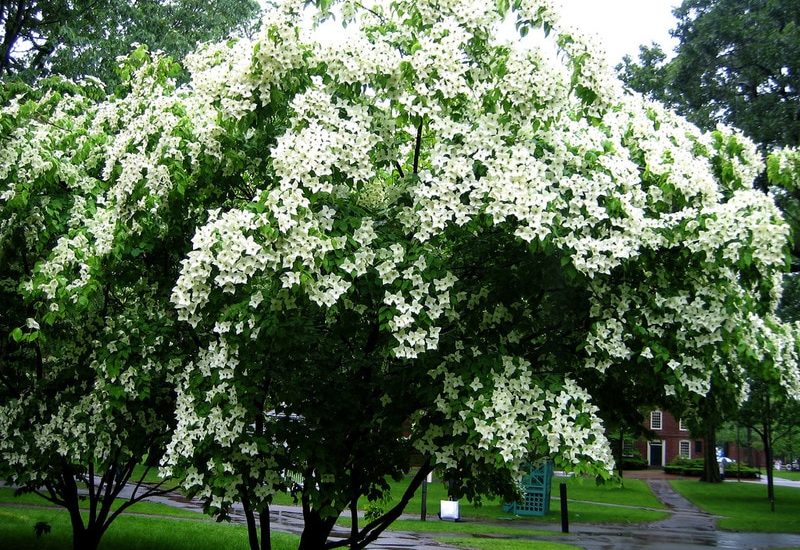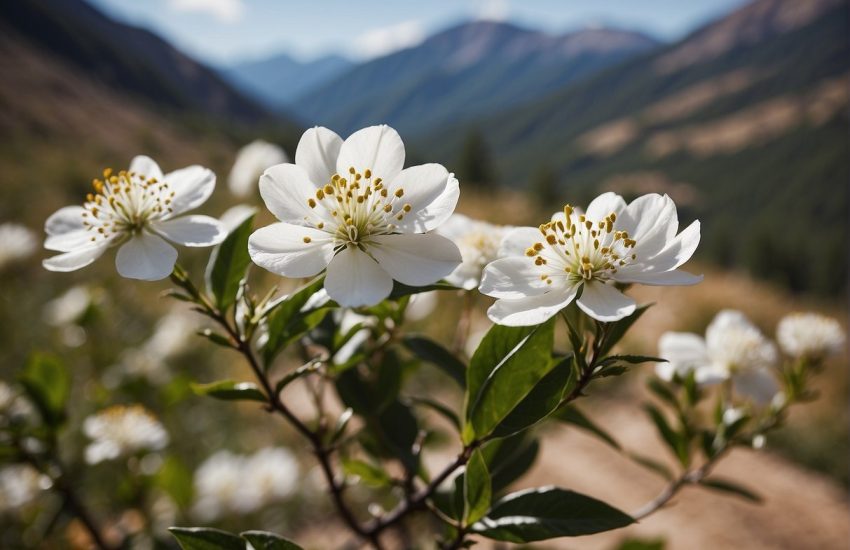Florida Trees with Red Flowers: A Guide to Identifying and Appreciating These Beautiful Trees
Florida is home to a diverse range of trees with red flowers that are not only visually stunning but also play an essential role in the state’s ecosystem. These trees can be found in various habitats, such as wetlands, coastal areas, and upland forests, and offer a beautiful contrast to the lush greenery that Florida is known for.
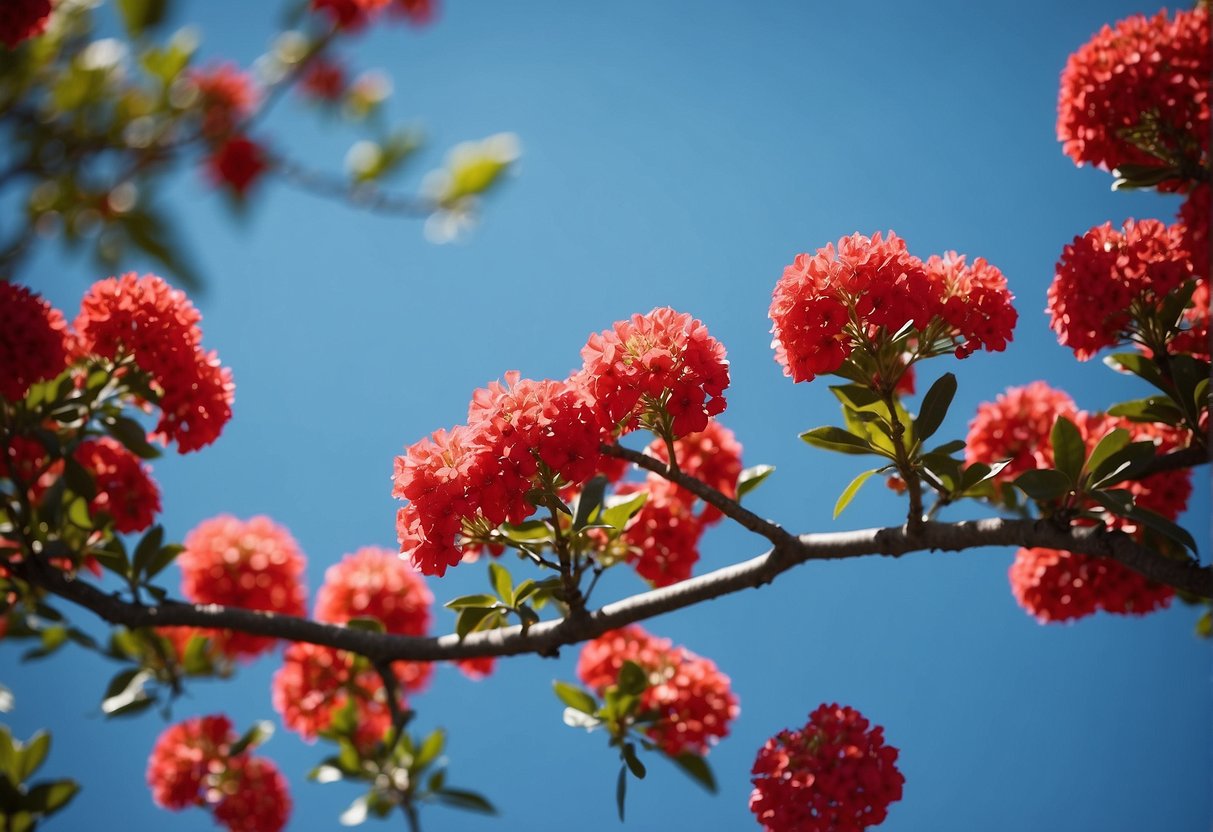
One of the most iconic trees with red flowers in Florida is the Royal Poinciana (Delonix regia). This ornamental tree is known for its vibrant, fiery-red blooms that cover the tree’s canopy during the summer months. The Royal Poinciana is a popular choice for landscaping in Florida due to its showy display of flowers and its ability to provide shade during the hot summer months.
Another tree with red flowers that can be found in Florida is the Firebush (Hamelia patens). This native shrub is a favorite among gardeners and landscapers due to its bright red tubular flowers that attract hummingbirds and butterflies. The Firebush is also drought-tolerant and can thrive in a variety of soil types, making it an ideal choice for Florida’s often sandy and dry conditions.
Popular Florida Trees with Red Flowers
Florida is known for its warm tropical climate and beautiful landscapes. One of the most striking features of the Florida landscape is the abundance of trees with red flowers. These trees add a splash of color to any garden or landscape. In this section, we will take a closer look at some of the most popular Florida trees with red flowers.
Royal Poinciana (Delonix Regia)
The Royal Poinciana is a stunning tree that is native to Madagascar but has become a popular ornamental tree in Florida. It is also known as the Flame Tree or the Peacock Tree due to its bright red flowers that resemble a peacock’s tail. The Royal Poinciana can grow up to 40 feet tall and 60 feet wide, making it an excellent shade tree. It blooms in the summer months and can be a beautiful addition to any landscape or garden.
Red Buckeye (Aesculus Pavia)
The Red Buckeye is a small tree or large shrub that is native to the southeastern United States, including Florida. It is known for its bright red flowers that bloom in the spring. The Red Buckeye can grow up to 20 feet tall and 15 feet wide, making it an excellent choice for smaller landscapes or gardens. It is also a popular tree for attracting hummingbirds and other pollinators.
Bottlebrush (Callistemon)
The Bottlebrush is a small tree or large shrub that is native to Australia but has become a popular ornamental tree in Florida. It is known for its unique, bottlebrush-shaped flowers that can be red, pink, or white. The Bottlebrush can grow up to 20 feet tall and 15 feet wide, making it an excellent choice for smaller landscapes or gardens. It blooms in the spring and fall and can be a beautiful addition to any garden.
Overall, these trees are just a few examples of the many species of flowering trees that can be found in Florida. They are popular for their vibrant colors and can add a touch of beauty to any landscape or garden.
Growing and Caring for Red-Flowering Trees
Red-flowering trees can add a pop of color to any landscape. However, growing and caring for them requires specific attention to soil, sunlight, pruning, and maintenance. In this section, we will cover the essential requirements for growing and caring for red-flowering trees.
Soil and Sunlight Requirements
Red-flowering trees thrive in full sun and well-drained soil. They can tolerate different soil types, but they prefer slightly acidic soil with a pH between 6.0 and 6.5. It is essential to ensure that the soil is not waterlogged, as this can lead to root rot and other diseases.
Pruning and Maintenance
Pruning is an essential aspect of maintaining healthy red-flowering trees. It is best to prune them during the dormant season to avoid damaging new growth. Pruning helps to shape the tree, remove dead or diseased branches, and promote new growth. It is also essential to remove any suckers that grow from the base of the tree.
Regular maintenance is also crucial for the health of red-flowering trees. It is essential to water them regularly, especially during dry periods. Mulching around the base of the tree can help to retain moisture and suppress weeds. Fertilizing the tree once a year in the spring can also help to promote healthy growth.
Pest and Pollinator Attraction
Red-flowering trees can attract a variety of pests and pollinators. Bees and hummingbirds are attracted to the bright red flowers and can help to pollinate the tree. However, it is essential to monitor for pests such as aphids, which can damage the tree and attract other pests.
In conclusion, growing and caring for red-flowering trees requires specific attention to soil, sunlight, pruning, and maintenance. With proper care, these trees can add a beautiful touch of color to any landscape.
Seasonal Changes and Deciduous Varieties
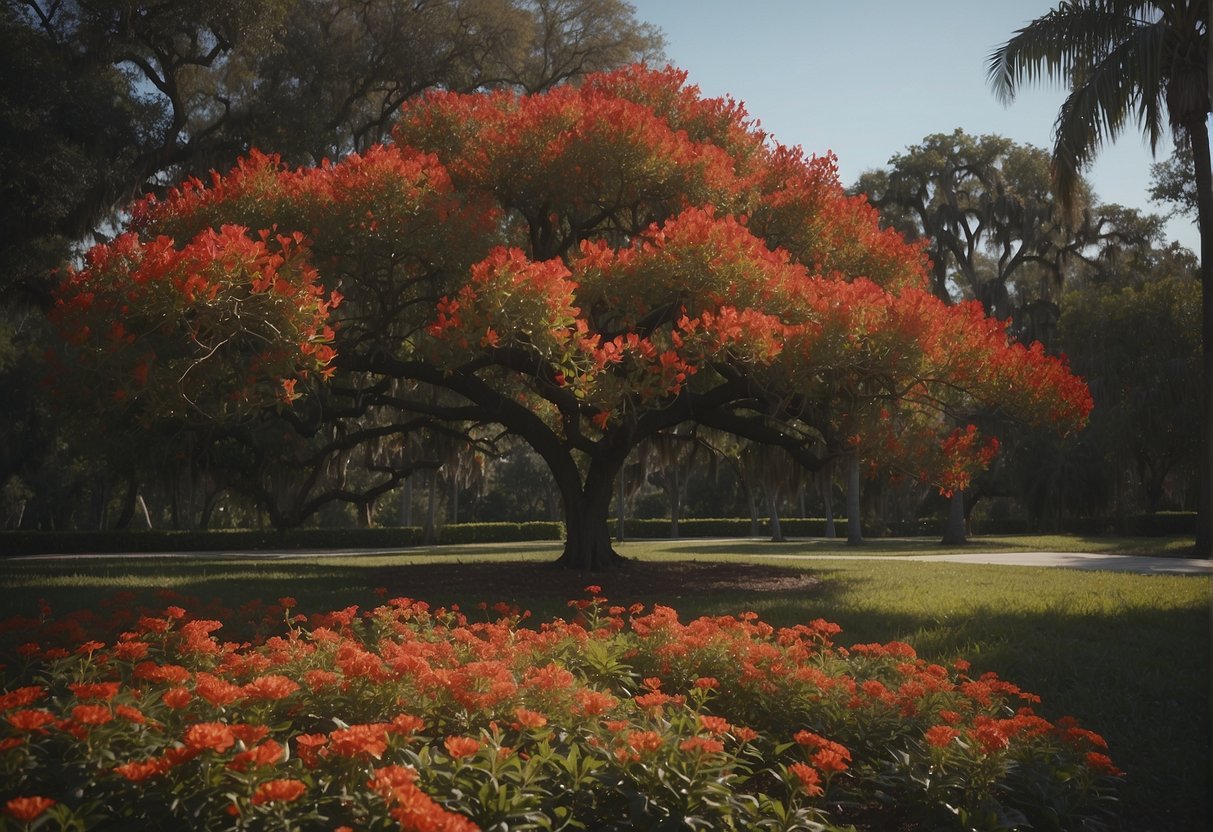
Florida is home to a wide variety of trees with red flowers, many of which are deciduous and undergo seasonal changes throughout the year. Understanding these changes can help you appreciate the beauty of these trees even more.
Spring and Summer Blooms
During the spring and summer months, many of Florida’s trees with red flowers are in full bloom, providing a stunning display of color. Some of the most common trees in this category include the Red Maple, the Eastern Redbud, and the Dogwood. These trees typically have bright red flowers that stand out against their green leaves, making them a popular choice for landscaping and gardening.
Fall Foliage and Seed Pods
As the weather begins to cool in the fall, many of Florida’s deciduous trees begin to change color, with their leaves turning shades of red, orange, and yellow. Some of these trees also produce distinctive seed pods that add to their visual appeal. The Sweetgum, for example, produces spiky seed pods that turn from green to brown as they mature, while the Redbud produces flattened, bean-like pods that hang from its branches.
Overall, Florida’s trees with red flowers provide a beautiful and diverse landscape throughout the year, with each season bringing its own unique changes and colors. Whether you’re a nature lover or a gardener, these trees are sure to impress with their stunning blooms and foliage.
Selecting the Right Tree for Your Florida Landscape
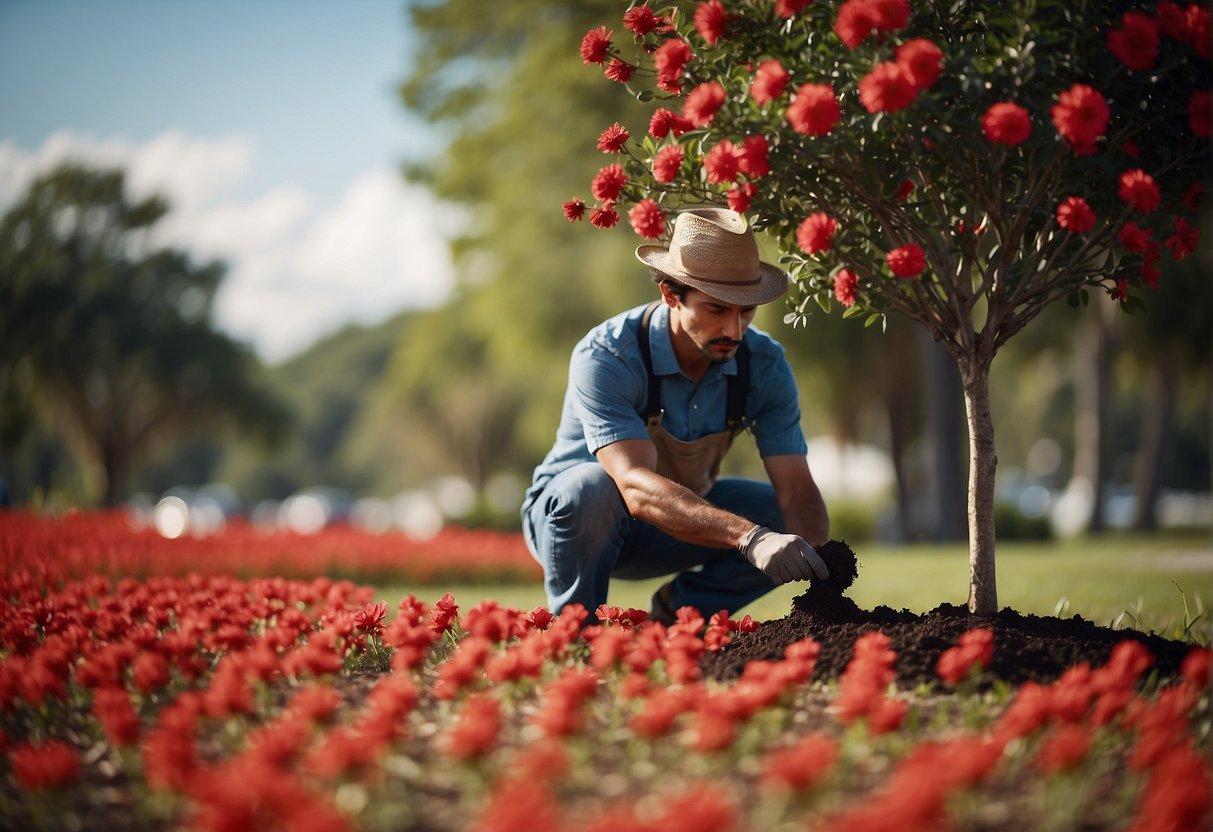
When it comes to selecting the right tree for your Florida landscape, there are several factors to consider. Choosing the right tree can enhance the beauty of your property, provide shade, and add value to your home. In this section, we will discuss some important considerations to help you select the perfect tree for your Florida landscape.
Native and Non-Native Species
One important factor to consider when selecting a tree for your Florida landscape is whether it is a native or non-native species. Native trees are adapted to the local climate and soil conditions, making them more likely to thrive in your landscape. Non-native trees may require more maintenance and care to survive in Florida’s unique environment.
Some popular native trees with red flowers include the Red Maple, the Firebush, and the Royal Poinciana. Non-native options include the Japanese Cherry Blossom and the Bottlebrush.
Considerations for Tree Size and Canopy
Another important consideration when selecting a tree for your Florida landscape is its size and canopy. Trees come in a variety of sizes, from small shrubs to towering giants. Consider the size of your property and the space you have available when choosing a tree.
Additionally, consider the tree’s canopy and how much shade it will provide. If you are looking to create a shaded area in your landscape, choose a tree with a large canopy. If you want to allow more sunlight to reach your property, choose a tree with a smaller canopy.
In conclusion, selecting the right tree for your Florida landscape requires careful consideration of several factors, including whether it is a native or non-native species, its size, and its canopy. By taking these factors into account, you can choose a tree that will thrive in your landscape and enhance the beauty of your property.

